Southern France is one of the most touristic places on earth, yet many visit it for the splendid nature of Provence and the scenic cities on the Mediterranean Sea, forgetting that this is a region with an incredibly rich history and many remarkable monuments to attest to it. A good way to enjoy the blend of history and picturesque surroundings is to visit the famous castles in the area.
Based on their historical and architectural value, this list brings together the most interesting castles in Southern France to visit.
Disclaimer: This post contains affiliate links. This means that should you click on certain links and then subsequently purchase a product, I will receive a small commission.
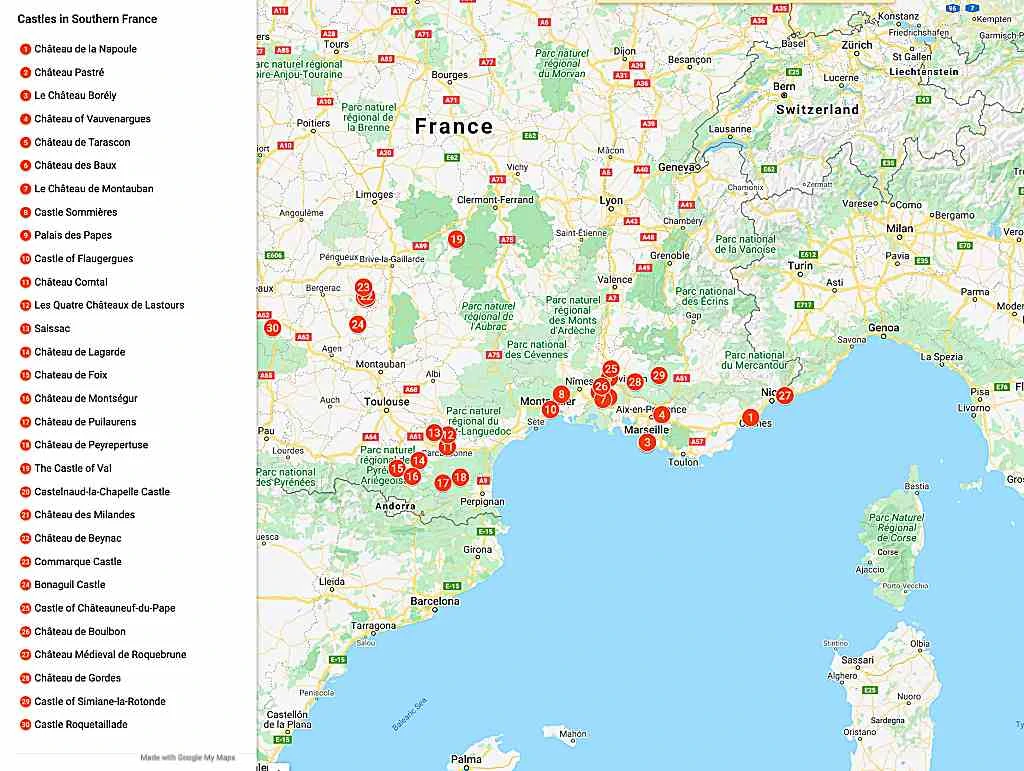
How to Get Around Southern France The easiest way to visit the castles in Southern France is by driving. I recommend booking a car through Discover Cars. They offer the best prices, you can compare all rental car agencies, and you can modify or cancel your booking for free. Click here for more information and to check the latest prices. You can also book a day trip from Toulouse to visit the famous Comtal castle in the Cité of Carcassonne. Click here for more information, and to book the tour. Alternatively, you can take the train to visit the castles in the South of France. Click here for more information on tickets.
30 Castles Worth Visiting in Southern France
1. Château de la Napoule
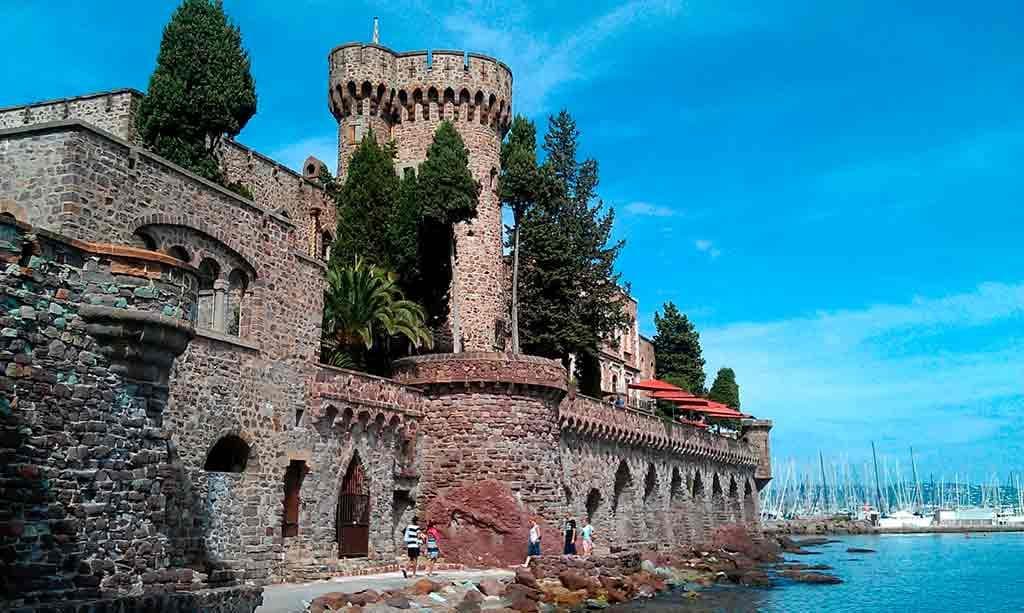
Château de la Napoule was a 14th-century fortified structure situated in a picturesque location by the sea. Once the home of the Counts of Villeneuve, the castle was repeatedly destroyed and rebuilt over the centuries.
At the beginning of the 20th century, it was purchased by the Clew family, comprised of a sculptor and a landscape architect. The couple completely rebuilt the castle and created a gorgeous French garden.
The interior was decorated with original furniture and adorned with Henry Clew’s outstanding sculptures. A restaurant has been opened on the terrace.
Where: Mandelieu-La Napoule, Alpes Maritimes
When: 14th-century/20th-century
Open to visit: Yes, check here for more information.
2. Château Pastré or Château de Montredon

Château Pastre was formerly known as Château de Montredon due to its location in the suburb of Montredon, in Marseille. This stunning Provencal castle was designed by a renowned Parisian architect, Jean-Charles Danjoy, in the latter half of the 19th century to serve as the private residence of a wealthy merchant family.
As the owners were popular socialites, they wanted an impressive and large enough building so they could hold entertainment for their many guests. Since 2012, the Château Pastre has been home to the Faience Museum of Marseille, dedicated to pottery. A public park surrounds the building.
Where: Marseille
When: 19th-century
Open to visit: Yes, check here for more information.
3. Château Borély
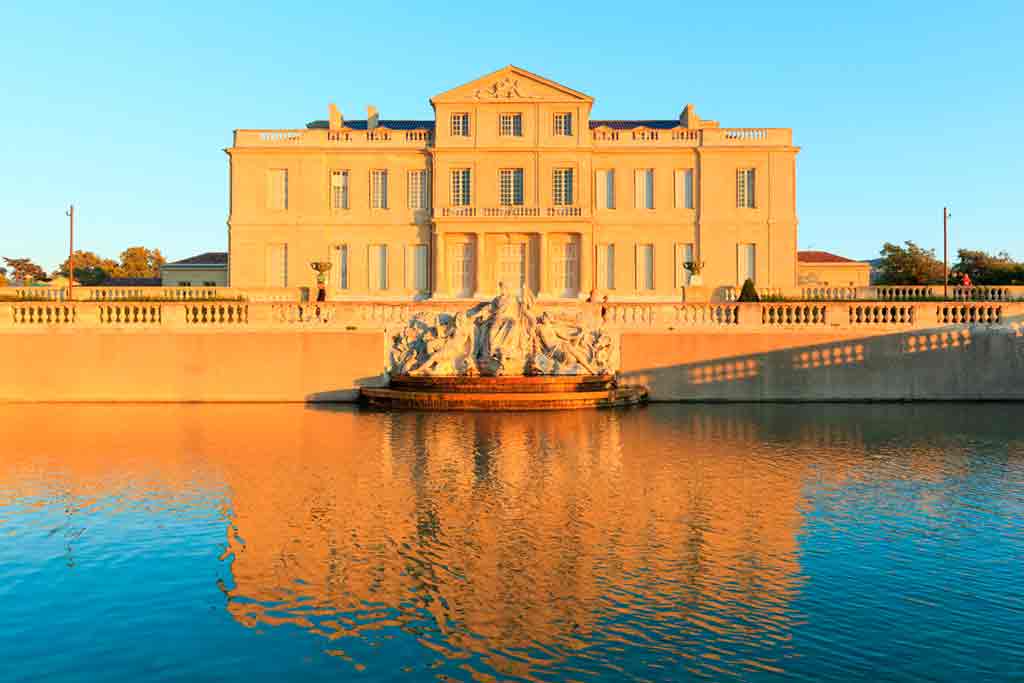
Situated by the seaside in Parc Borely, the most popular park in Marseille, Château Borely is a beautiful construction from the 18th century built as a home for a rich local merchant named Louis Borely.
His descendants added the Versailles-style gardens to the main property. English-style gardens were planted later. Since the 19th century, the castle has belonged to the city of Marseille, and it was recently reopened to the public after renovation.
It is now home to three museums: the Museum of Fashion, the Museum of Decorative Arts, and the Museum of Earthenware.
Where: Marseille
When: 18th-century
Open to visit: Yes, check here for more information.
4. Château of Vauvenargues
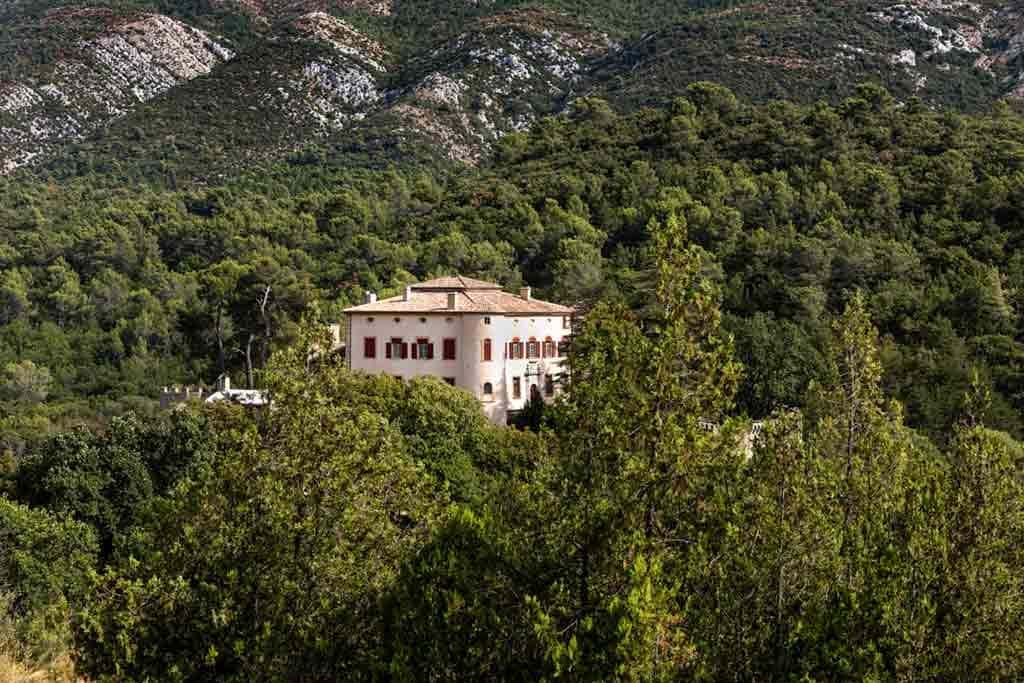
The history of Château of Vauvenargues began in the 13th century when the castle was built as a residence for the Archbishops of Aix. Three centuries later, a massive wall was added to the structure, complementing the two large towers.
The present configuration dates from this period, but large modifications were made in the 17th century. The castle belonged to several royal and noble families, passing by marriage or sale from one influential family to another.
In 1958, the château was bought by Pablo Picasso, who painted here some of his famous works and was even buried here. The castle still belongs to the Picasso family.
Where: Village of Vauvenargues, Aix-en-Provence
When: 13th-century to 17th-century
Open to visit: No, private property.
You might also like:
5. Château de Tarascon
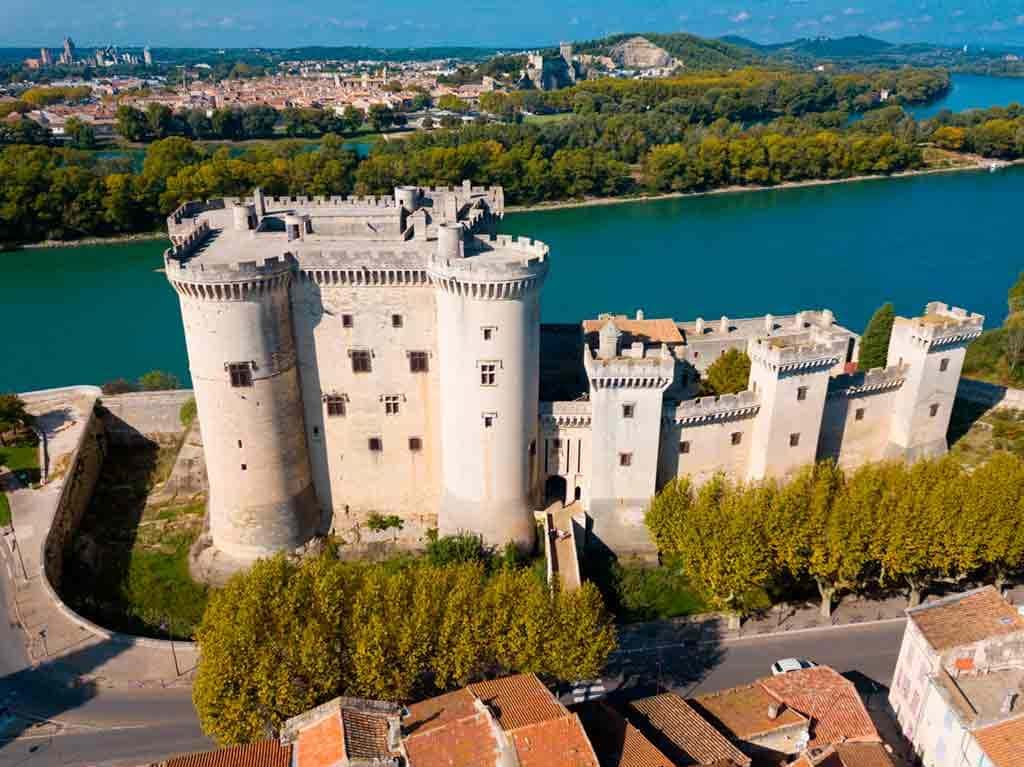
Located in an ancient fortified town between some of Provence’s most charming sights, Château de Tarascon was built right on the edge of the Rhone River.
With round towers and a moat, this is a typical medieval fortress once isolated from the outside by a draw bridge. A castle existed in the same location since the 13th century, but it was totally destroyed in battle. A new construction arose on the site at the beginning of the 15th century.
Abandoned for a while, the castle was later transformed into a prison. Today visitors can stroll around the inner courtyard, visit the chapel, and check out the stunning views from the rooftop.
Where: town of Tarascon
When: 15th-century
Open to visit: Yes, check here for more information.
6. Château des Baux de Provence
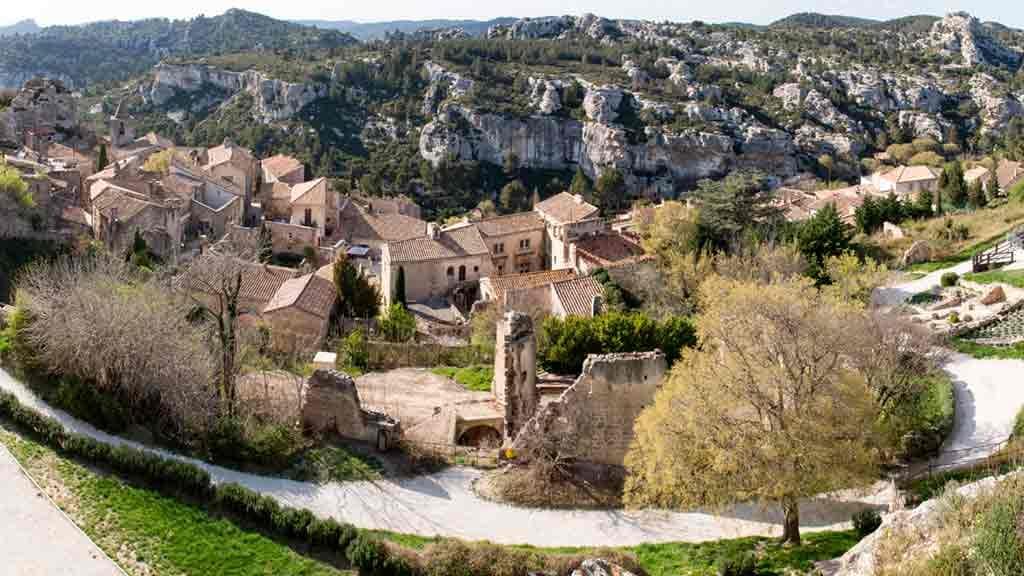
Château des Baux de Provence was once a strong medieval fortress, protecting the region from its position atop a rocky hill. Although now in ruins, the castle offers splendid views of the Camargue delta and the rugged Alpilles mountains.
Visitors are welcomed with a complex touristic setting, which features a medieval shop, a film screening in the Saint-Blaise chapel, a model of the castle showing its 13th-century appearance, and strategically placed pictures that give a glimpse into the castle’s time of glory.
Where: village of Les Baux de Provence
When: 10th-century
Open to visit: Yes, check here for more information.
7. Le Château de Montauban

Built at the end of the 18th century and completed in the early 19th century, Château de Montauban was once the residence of a noble family, the Ambroy, and it is one of the best castles to visit in Southern France.
The place is renowned for being a summer retreat for famous French writer and poet Alphonse Daudet, who was friends with the owners. Daudet frequently wrote about his attachment to the place and its beauty. Today, the castle is a museum dedicated to the history of the town, Fontvielle, and local traditions.
Where: Fontvielle
When: 18th/19th-century
Open to visit: Yes.
8. Castle Sommières
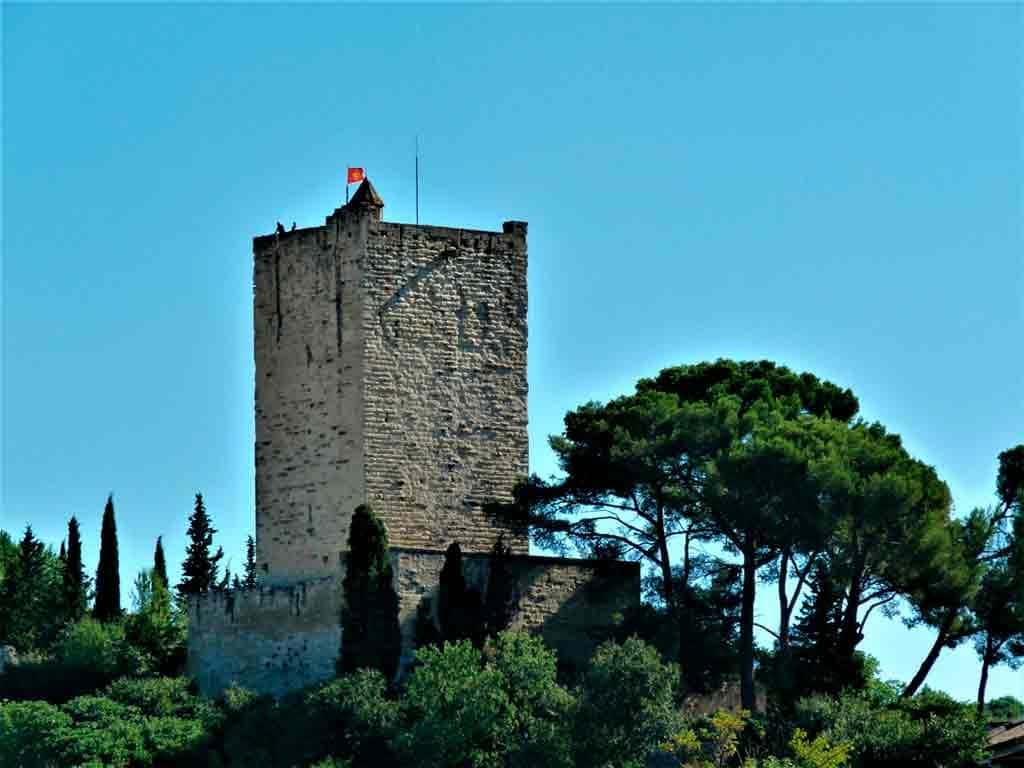
Built in the 11th century, Castle Sommieres has been through many changes over the centuries, reflecting the trends and political climate of each era. In its first centuries, the fortress was repeatedly under siege due to its strategic location.
It was fortified gradually until it became a true military stronghold and an important prison. The castle was abandoned in the 20th century, and only one of its two main towers still stands today. Now a historical monument, Castle Sommieres houses a heritage center.
Where: Village of Sommières
When: 10th-century
Open to visit: Yes, check here for more information.
9. Palais des Papes
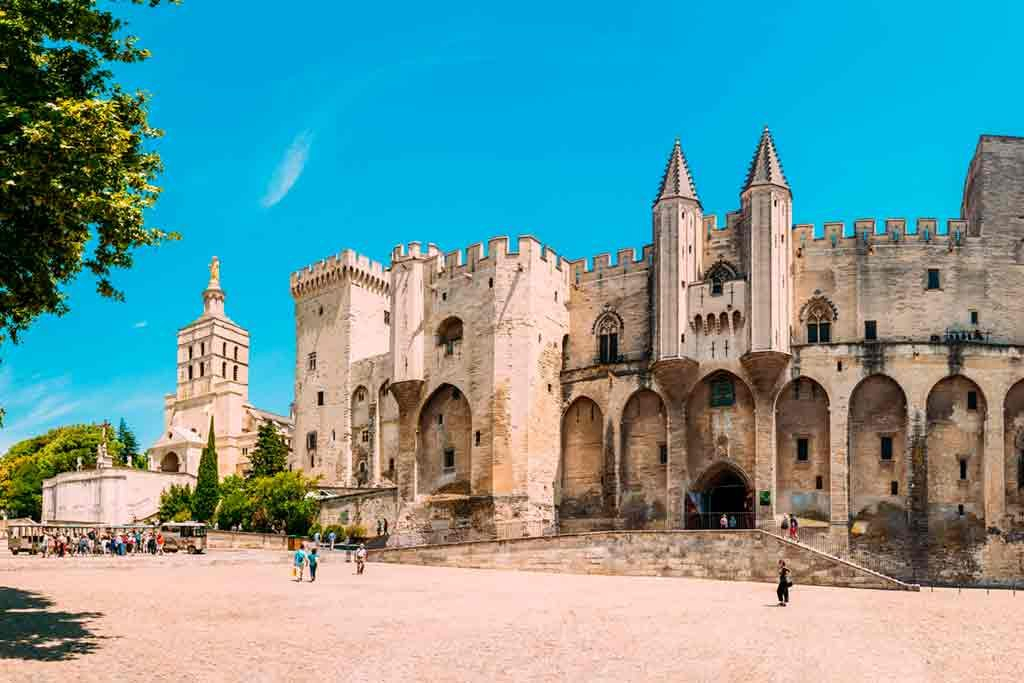
Built in less than 20 years, the Palais des Papes was considered in the 14th century one of the most extraordinary residences in the world. The palace functioned as the official residence of the pope and home of the Catholic Church after the Papal State had established Avignon as its capital.
Today it is one of the top castles to visit in Southern France. Visitors have the chance to explore the incredible ceremonial halls, treasure rooms, lavish private apartments, chapels, and terraces. As expected, all rooms are beautifully decorated with immensely valuable frescoes, paintings, and religious art pieces.
Click here for more information and to book your tickets to the Palais des Papes.
Where: downtown Avignon
When: 14th-century
Open for visit: Yes, check here for more information.
10. Castle of Flaugergues
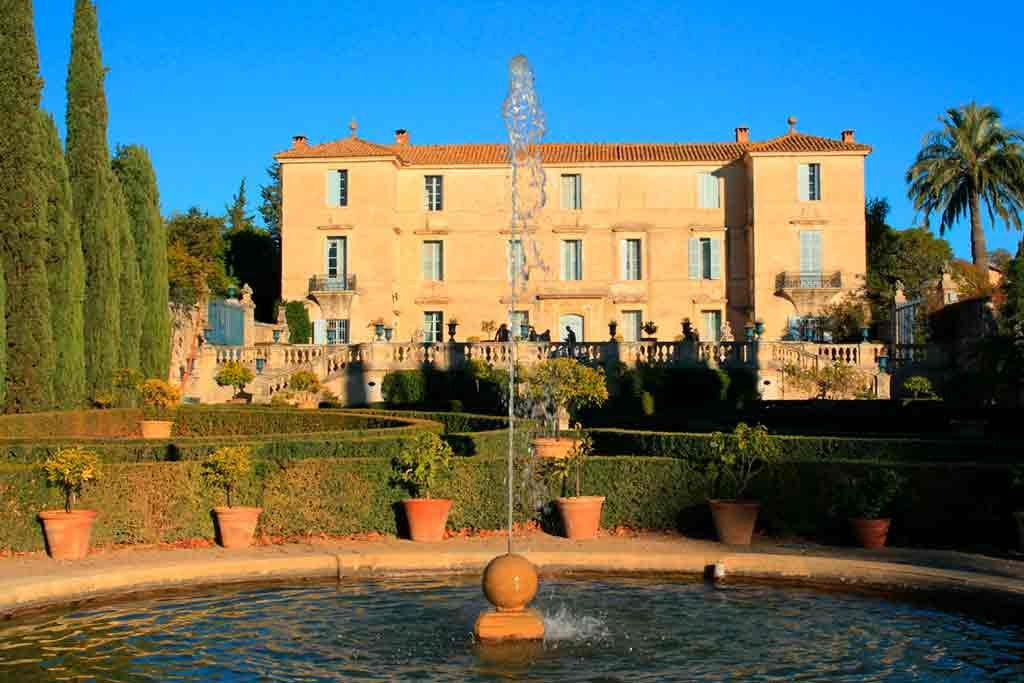
Château de Flaugergues is an extravagant country house built in the 17th century on the outskirts of Montpellier by a wealthy bourgeois family. As fashionable at the time, the residence featured lavish furniture, Flemish tapestries, paintings, pottery, and porcelain collections, which have remained intact ever since.
The castle is surrounded by French and English-style gardens, along with an orangery. Although not grandiose like other French aristocratic residences, Château de Flaugergues is a charming place with an impressive interior. A local wine store can be found on the grounds of the castle, selling wine from the castle’s vineyard.
Where: Montpellier
When: 17th-century
Open to visit: Yes, for more information, check here.
11. Château Comtal
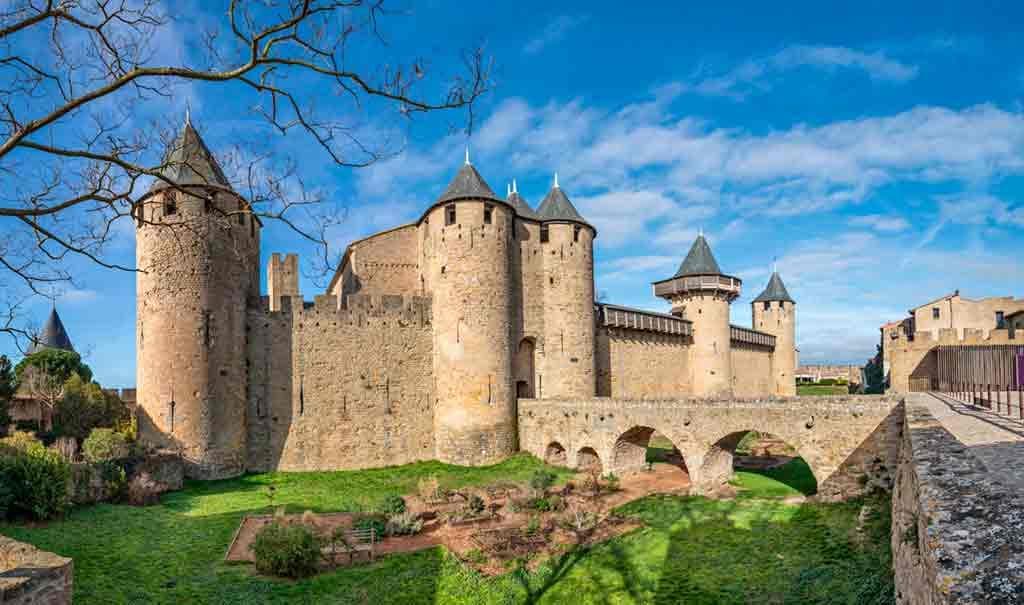
Located within the fortified medieval city of Carcassone, Château Comtal is a Cathar castle built in the 12th century atop a hillside. As the city was once the seat of the Counts of Carcassonne, Château Comtal was the extravagant residence of the country’s most influential aristocrats and was designed as such.
In the 13th century, it became a royal fortress and maintained an important strategic and political role until the 17th century. Restored in the 19th century, Château Comtal is now a UNESCO World Heritage Site and is considered one of the most beautiful medieval castles in the world.
Where: Carcassonne
When: 12th-century
Open for visit: Yes, check here for more information.
You might be interested in the following:
Carcassonne: Castle and Ramparts Skip-the-Line Ticket
Cité de Carcassonne: Guided Tour
12. Châteaux de Lastours
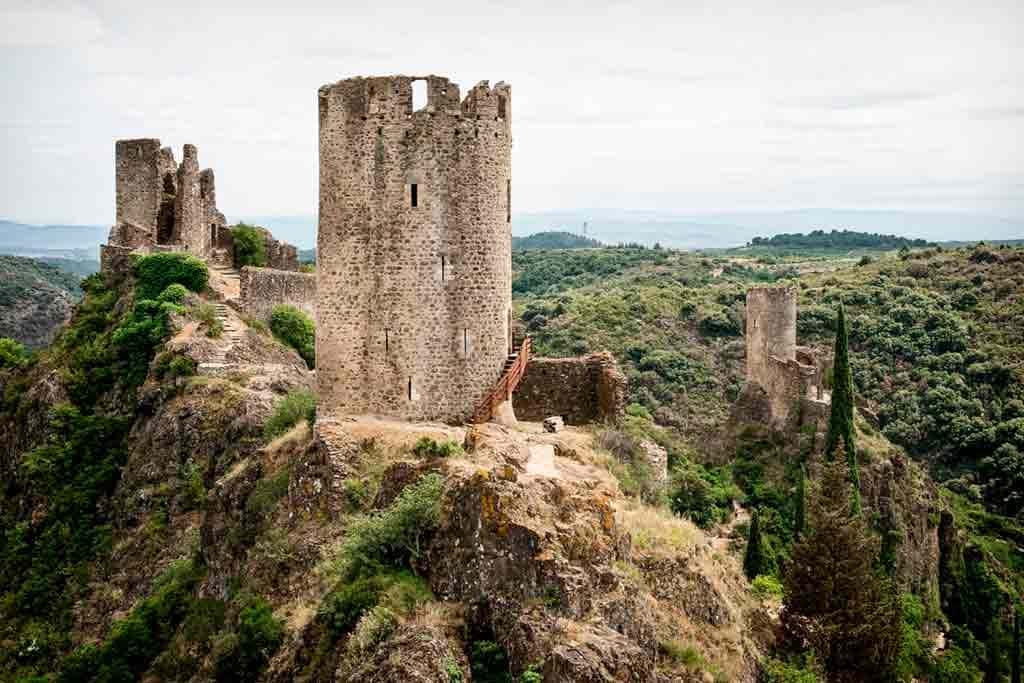
Châteaux de Lastours is a Cathar complex of four medieval castles that are now in ruins. Built in the first decade of the 17th century, the complex had an important role in the protection of the area and was developed as a strategic, fortified commune, as suggested by its location on a rocky outcrop above the village.
Called Cabaret, Tour Regine, Surdespine, and Quertineux, the castles were once places of reunion for the French crusaders during the Cathar Crusade. The village of Lastours is also worth a visit as it is an important archaeological site.
Where: Village of Lastours
When: 17th-century
Open to visit: Yes, check here for more information.
13. Castle of Saissac
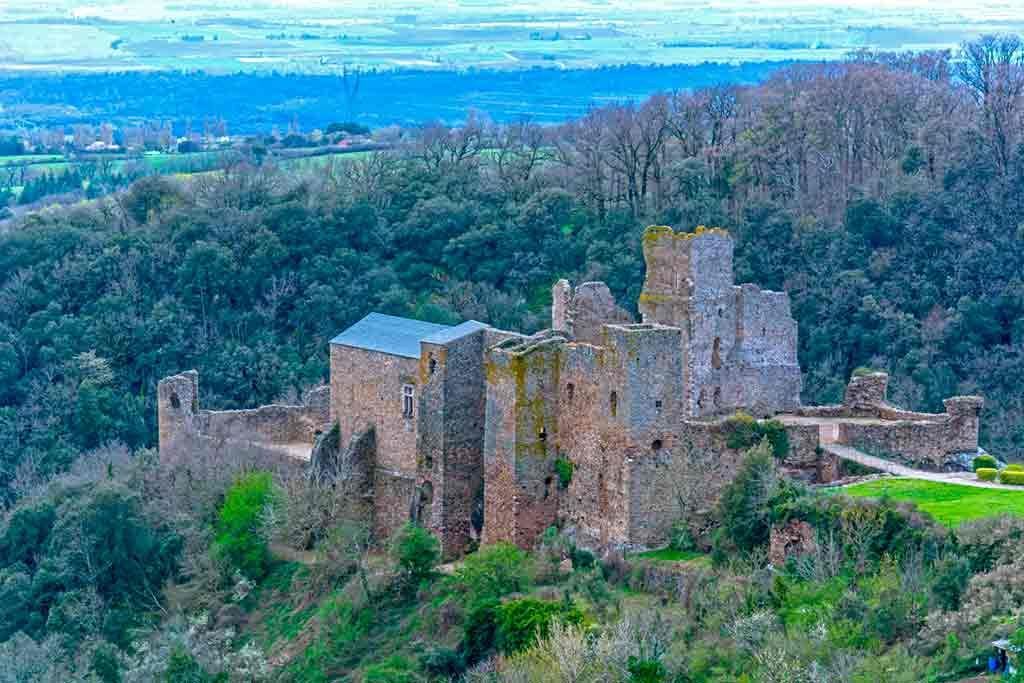
The Castle of Saissac is a medieval fortress dating back to Cathar times, which was strategically built above the plain of Carcassonne. The castle is mentioned in documents from the 10th century, but archeological evidence suggests that the castle was built around 900.
As the Saissac family grew more influential and acquired noble status, the castle was also expanded to reflect their growing power, becoming an impressive fortress.
Where: Village of Saissac
When: 10th-century
Open to visit: Yes, check here for more information.
14. Château de Lagarde
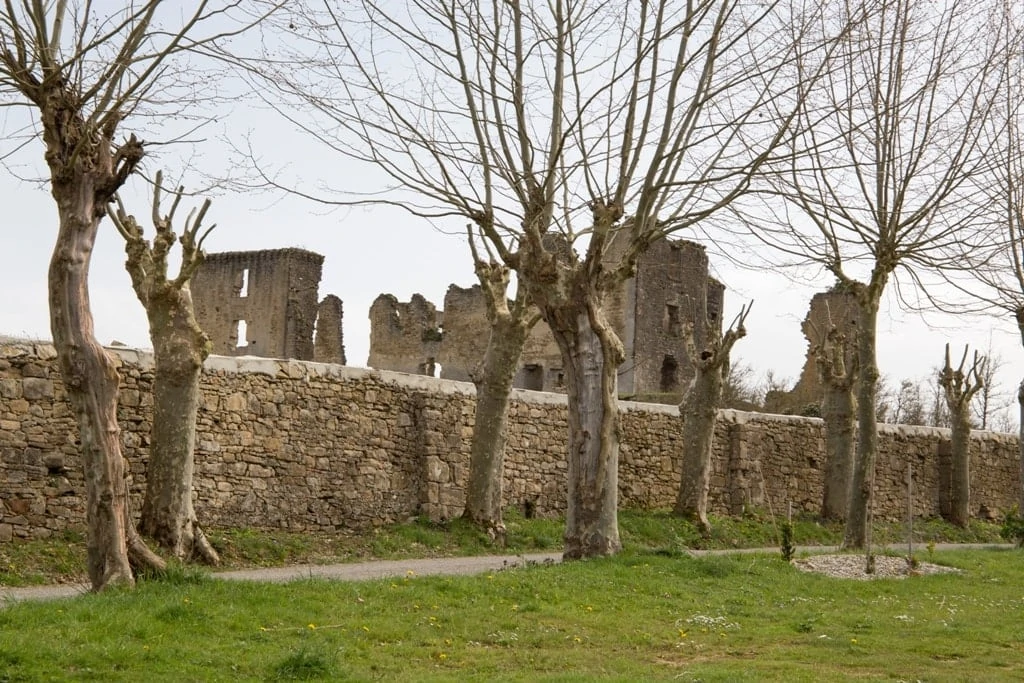
Built in the first half of the 18th century, Château de Lagarde was originally a charterhouse set amid beautiful valleys and forests. Initially a fortified structure, it was gradually turned into a lavish and comfortable residence to accommodate the needs of its aristocratic residents.
During the French Revolution, however, the castle was damaged and lost some of its charms. Today Château de Lagarde is in ruins, with only a few towers and curtain walls still intact.
Where: Village of Lagarde
When: 18th-century
Open to visit: Yes, check here for more information.
15. Château de Foix
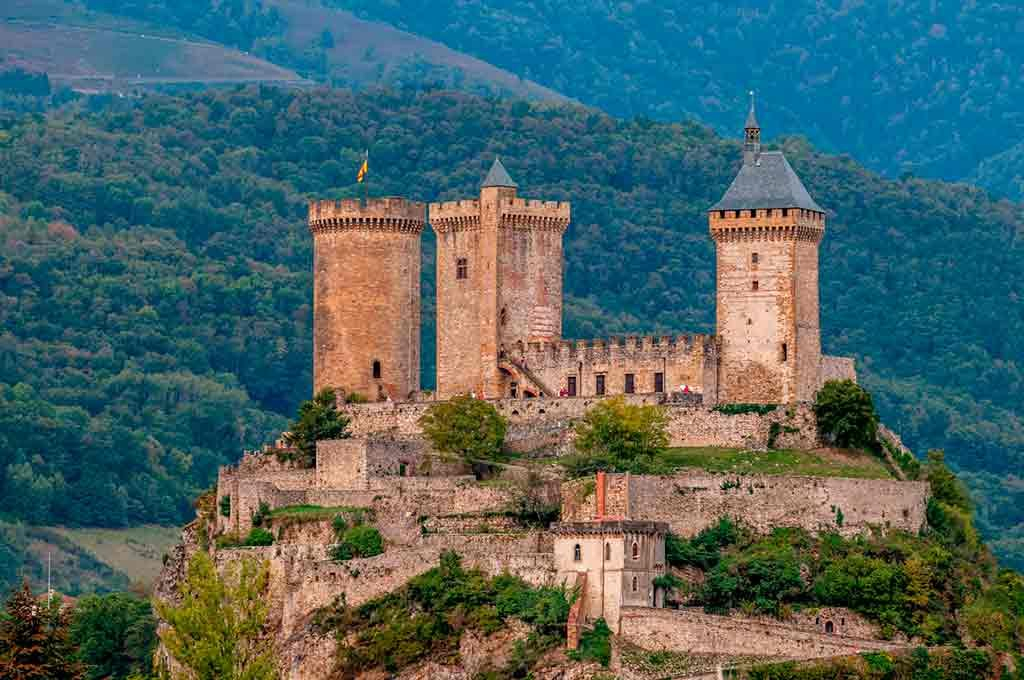
Built in the 10th century, Château de Foix was the seat of the powerful Comtes de Foix during the medieval era. From the 16th century, the castle lost its political significance and was turned into a prison.
Although the interiors are empty, the castle is home to an interesting interactive museum that showcases details about the Counts of Foix and their personal and political lives.
The castle also houses exhibits of war machines, weapons, and other medieval artifacts. Another highlight is the striking view from the battlements. Visitors can participate in workshops about life in the Middle Ages.
Where: Foix, Ariege
When: 10th-century
Open to visit: Yes, check here for more information.
16. Château de Montségur
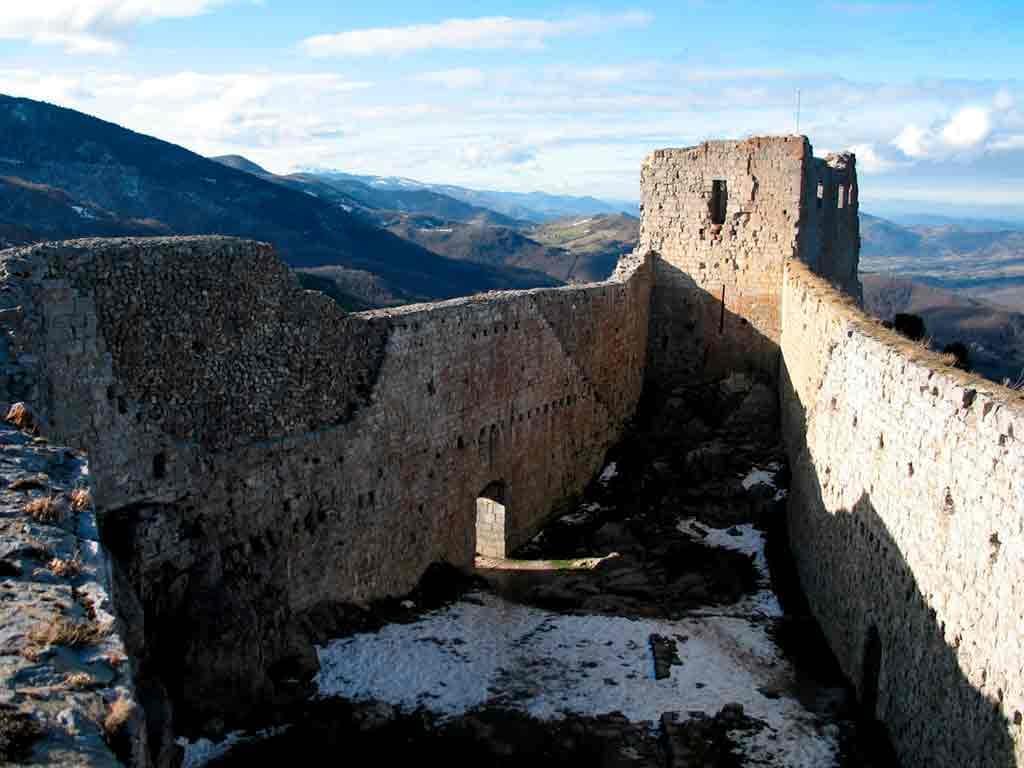
One of the most famous Cathar Castles, Château de Montsegur, is associated with a powerful episode of Cathar history. In 1244, the castle was under siege for over ten months, and 200 Cathars were burned alive on the site after refusing to renounce their faith at the order of the Inquisition.
After this tragic event, Montsegur Castle became an important symbol of resistance. Today the castle is in ruins, but visitors can find more about its history from the history and archaeology museum located in the village of Montsegur, which displays items found on the grounds of the castle.
Where: Village of Montsegur, Ariege
When: 10th- to 11th- century
Open to visit: Yes, check here for more information.
17. Château de Puilaurens

A castle existed on the site of Château de Puilarens from the 10th century, but around the 13th century, the place started being associated with the Cathars.
A striking example of medieval architecture, Château de Puilaurens was built on a rocky hill to serve a protective role. Due to its important location, it became a target of the French monarchy who captured it and transformed it into a powerful military stronghold.
The castle was abandoned after the French Revolution, but its ruins are well-preserved. From its high altitude, Château de Puilarens offers remarkable views of the surrounding countryside.
Where: commune of Lapradelle-Puilaurens
When: 10th-century
Open to visit: Yes, check here for more information.
18. Château de Peyrepertuse
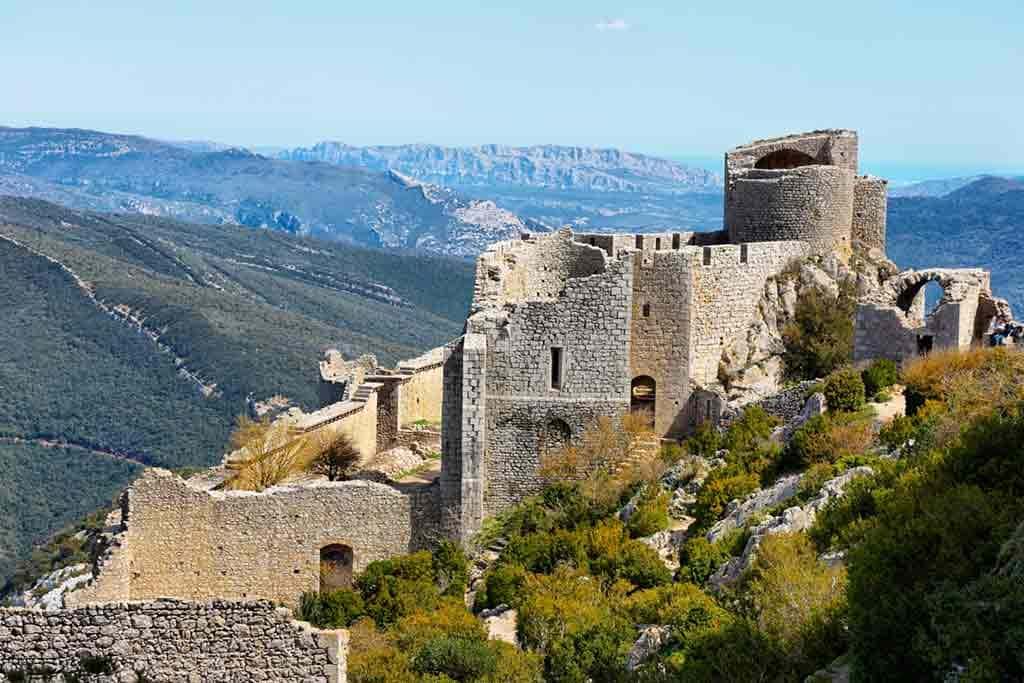
Another famous Cathar castle in southern France, Château de Peyrepertuse, is located at the top of a rocky ridge with views over the entire surrounding region, which suggests its historical defensive role.
Built in the 11th century, the castle was substantially expanded and fortified over the centuries due to its position on the border with Spain and Aragon.
When peace settled in the region, the castle’s military role ended, and after the French Revolution, it was completely abandoned. Its dramatic location, along with its impressive size, makes it one of the most visited castles in the region.
Where: Duilhac-sous-Peyrepertuse
When: 11th-century
Open to visit: Yes, check here for more information.
19. The Castle of Val
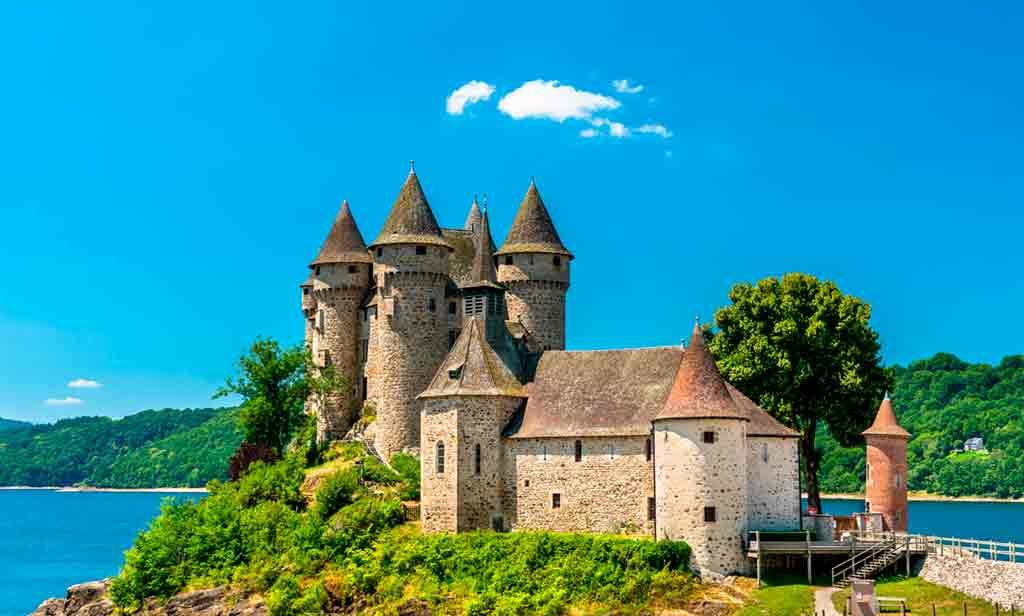
Located in a scenic location on a small peninsula by the peaceful waters of Lake Bort-les-Orgues, Val Castle is a beautiful medieval castle whose construction began in the 14th century and ended in the 15th century.
The castle includes a well-preserved Gothic chapel, a charming courtyard, and important architectural elements such as a grand staircase and fireplaces of Renaissance inspiration.
During summer, a landscaped beach opens near the castle. Visitors can also take a boat cruise on the lake, enjoying views of the romantic castle from afar.
Where: municipality of Lanobre
When: 14th- to 15th- centuries
Open to visit: Yes, check here for more information.
20. Castelnaud-la-Chapelle Castle
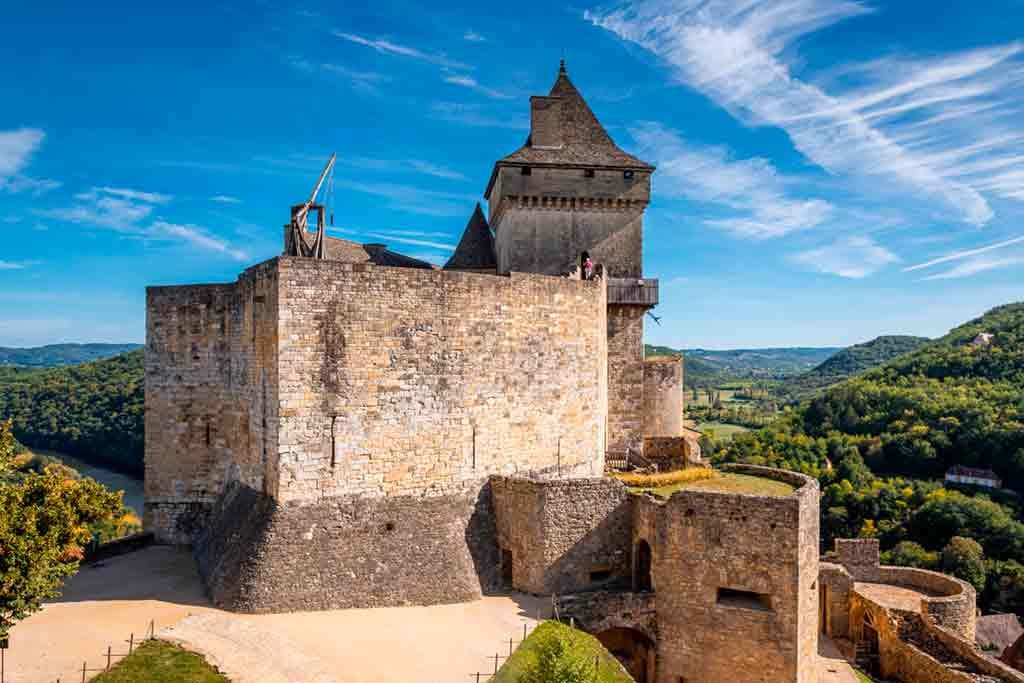
Located in Dordogne, Château de Castelnaud is one of the most visited French castles. With its majestic architecture and impressive location on a rocky hill above the village, the castle is one of the most romantic sights in the area and offers wide panoramic views of the surrounding valley.
Founded as early as the 12th century, the castle also has an interesting history as it played an important role in many military conflicts. Now, Castelnaud is a historical monument that houses important medieval weaponry and artifacts.
Where: Village of Castelnaud
When: 12th-century
Open to visit: Yes, check here for more information.
21. Château des Milandes
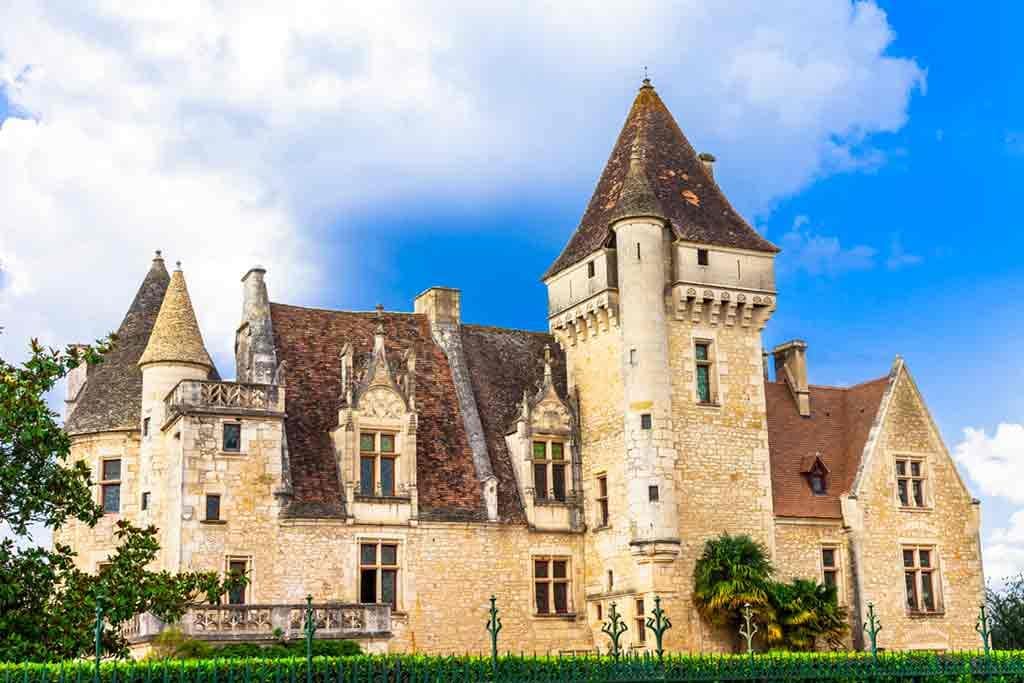
Château de Milandes was built in the 15th century to serve as a residence for the wife of Francois de Caumont, a French nobleman who also owned Castelnaud Castle. This gorgeous Renaissance castle was abandoned after the French Revolution and suffered serious damage.
In the 20th century, famous American music star Josephine Baker purchased the property and restored it. Today Château des Milandes is one of the prettiest French castles, featuring turrets, stained glass windows, and other fairy-tale-like features. The Art Deco interior is also a highlight.
Where: Castelnaud-la-Chapelle
When: 15th-century
Open to visit: Yes, check here for more information.
22. Château de Beynac
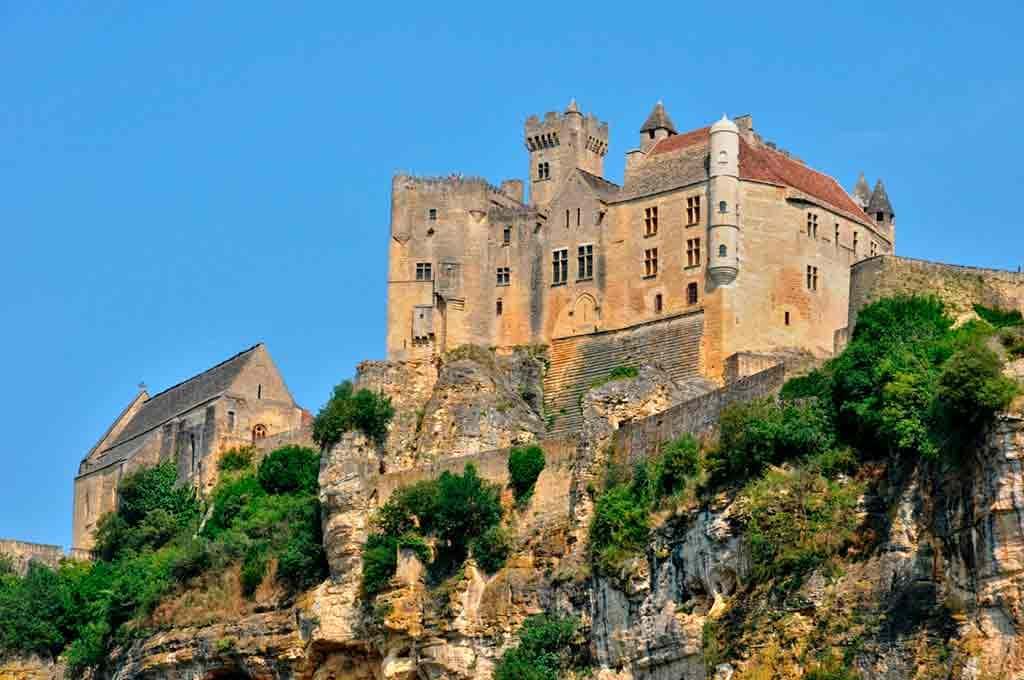
An imposing medieval fortress built in the 12th century, Château de Beynac was built high on a cliff to avoid enemy attacks and to allow wide control over the Dordogne Valley.
To enjoy the panoramic views, visitors must climb the spiral staircase that opens up to the watchtower. Besides the scenic views, the castle features important architectural elements such as a roman keep and an oratory, as well as valuable 17th-century paintings and frescoes.
Where: village of Beynac-et-Cazenac, Dordogne
When: 12th-century
Open for visit: Yes, check here for more information.
23. Castle Commarque
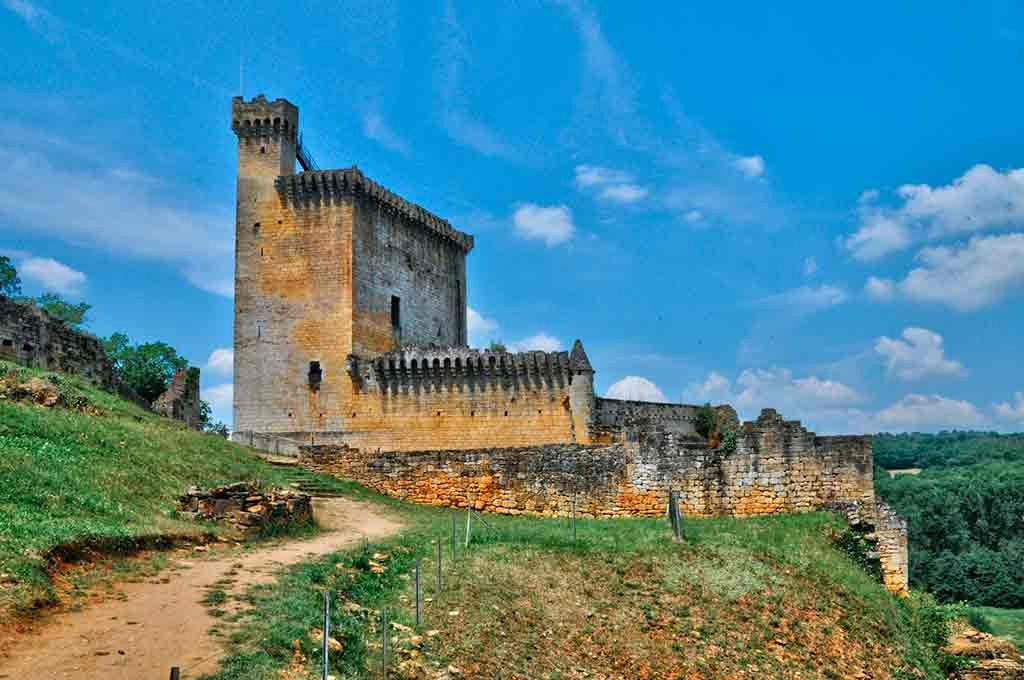
Built in the 12th century, Castle Commarque guards the valley of the Beune River. This beautiful medieval construction had an important historical role but was abandoned and left to crumble in the last few centuries.
In the 1970s, Hubert de Commarque purchased the property that historically belonged to his family and launched a renovation project. Archaeological work uncovered fortified walls, a Gothic keep, the Great Hall, and a Romanesque tower. The chapel of the castle was found almost intact.
Where: Les Eyzies-de-Tayac-Sireuil
When: 12th-century
Open to visit: Yes, check here for more information.
24. Bonaguil Castle
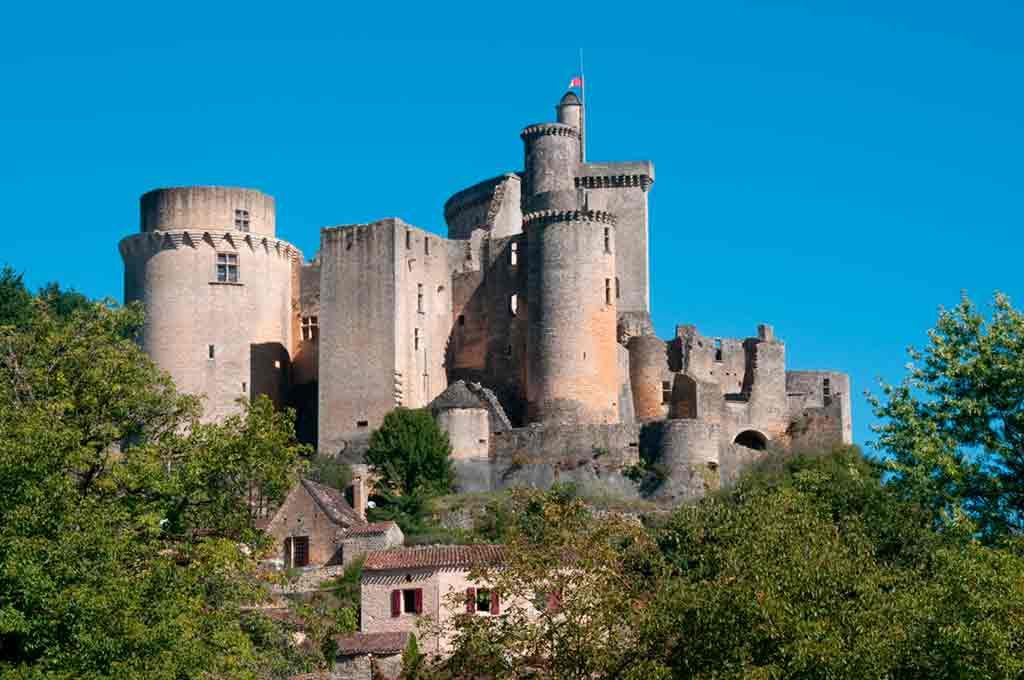
Originally built in the 13th century, Château de Bonaguil was fortified and expanded at the end of the 15th century when important elements with a defensive role were added.
Although transformed into an example of the best military architecture of the Middle Ages, the fortress was never attacked. It remains; however, one of the most stunning fortified castles in France, and the turrets, towers, drawbridge, and moats are still intact. A panoramic terrace offers beautiful views of the lush countryside.
Where: Village of Saint-Front-Sur-Lémance
When: 13th-century
Open for visit: Yes, check here for more information.
25. Castle of Châteauneuf-du-Pape
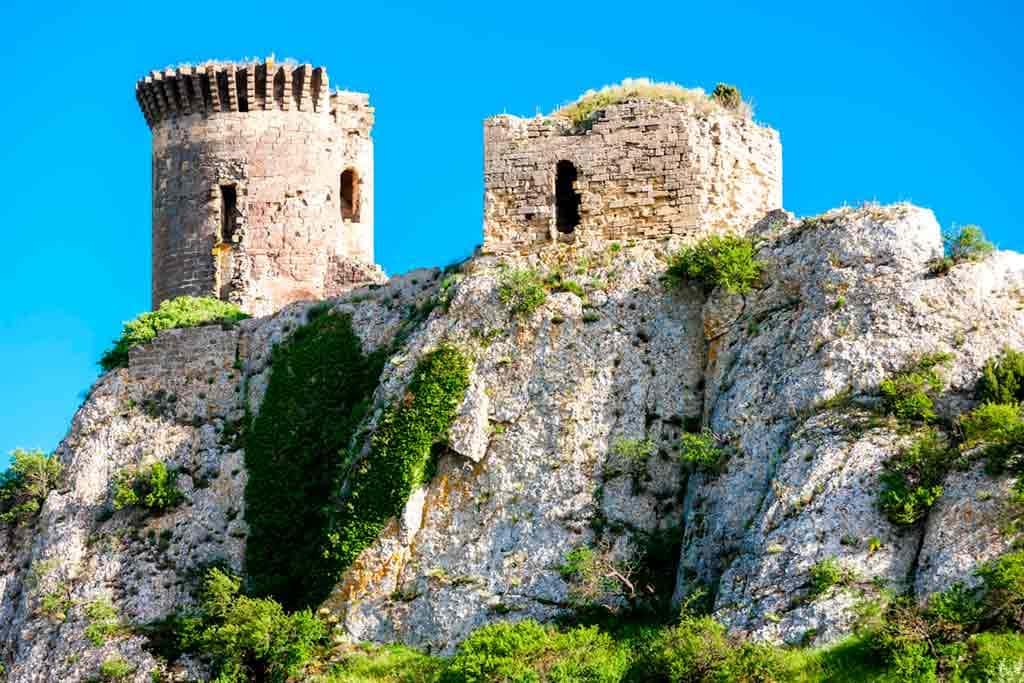
Located in an area of famous French vineyards, the Castle of Château Neuf-du-Pape was a Papal Castle built in the 14th century. While its size and position suggest that the castle had a defensive role, the extravagant architecture shows that the castle was also meant as an elegant summer residence.
The grounds of the castle include charming gardens, vineyards, and olive groves. In the 15th century, when the Popes returned to Rome, the castle was abandoned. The worst damage was caused, however, during World War II, when German troops blew up an important part of it.
Only a dungeon, a cellar, and the Southern Wall are intact today, but the castle is still an important historical sight and it is used for activities and events.
Where: town of Châteauneuf-du-Pape
When: 14th-century
Open to visit: Yes
26. Château de Boulbon

Overlooking the Rhone Valley, Chateau de Boulbon is a feudal castle from the 12th century which, for centuries, ensured the protection of Provence against foreign invaders.
Although it changed many owners, the castle belonged most of the time to important noble families with ties to royalty. At the beginning of the 19th century, the castle was abandoned, and it was never inhabited again. Now in ruins, Chateau de Boulbon is private property.
Where: Boulbon, Bouches-du-Rhône
When: 12th-century
Open to visit: No, Private Property. Check updates here.
27. Château Médieval de Roquebrune
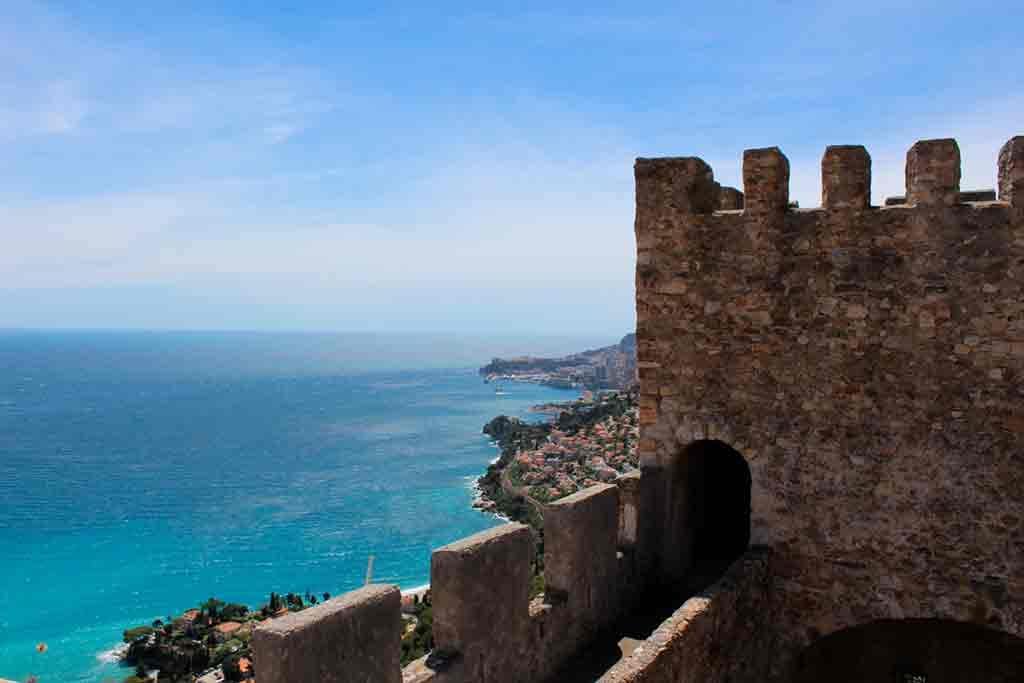
Chateau Medieval de Roquebrune was built as early as 970 as a fortified structure meant to ensure the protection of the entire village of Roquebrune-Cap-Martin against barbarian invasions. By the 15th century, the political role of the castle was substantial, and the fortifications were expanded.
Since the beginning of the 20th century, the castle belongs to the local council. Overlooking the medieval village and the Mediterranean Sea east of Monaco, this massive fortress is truly a sight to be seen.
Where: Village of Roquebrune-Cap-Martin
When: 10th-century
Open to visit: Yes, check here for more information.
28. Château de Gordes
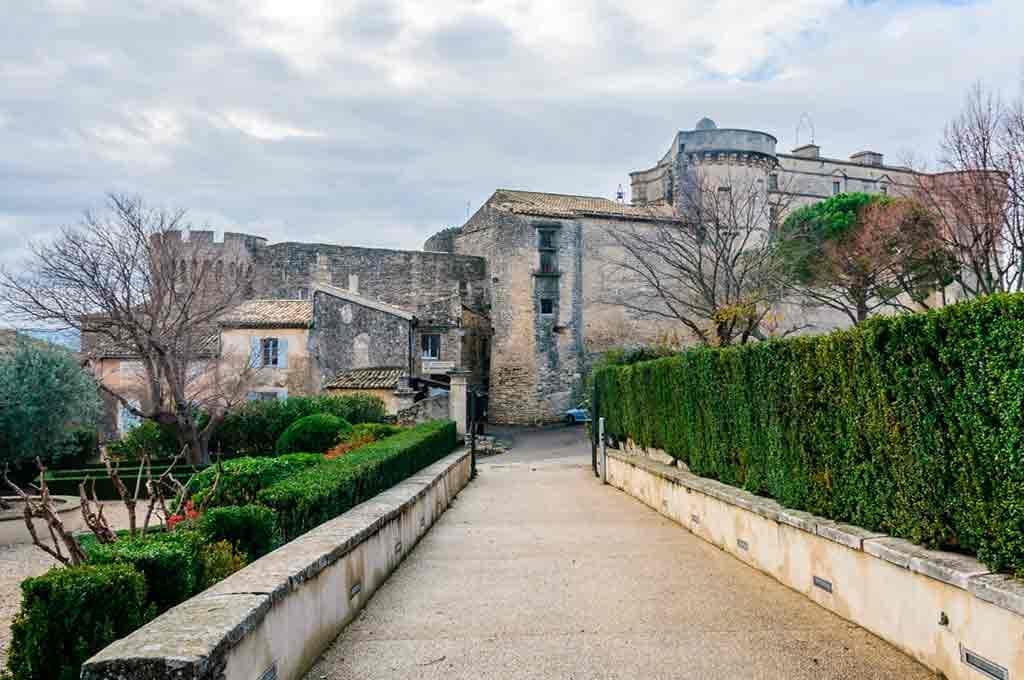
Chateau de Gordes is a medieval fortress from the 11th century that was enlarged in the following centuries to resist enemy attacks. In the 15th century, a new owner from a powerful noble family launched a large project of renovation to transform the feudal castle into a luxurious Renaissance-style residence.
After a period of neglect, the castle served as a granary, military barracks, and even a prison. Today medieval features co-exist with classical Italian Renaissance elements.
Where: village of Gordes, near Avignon
When: 11th-century
Open to visit: yes, check here for more information.
29. Castle of Simiane-la-Rotonde
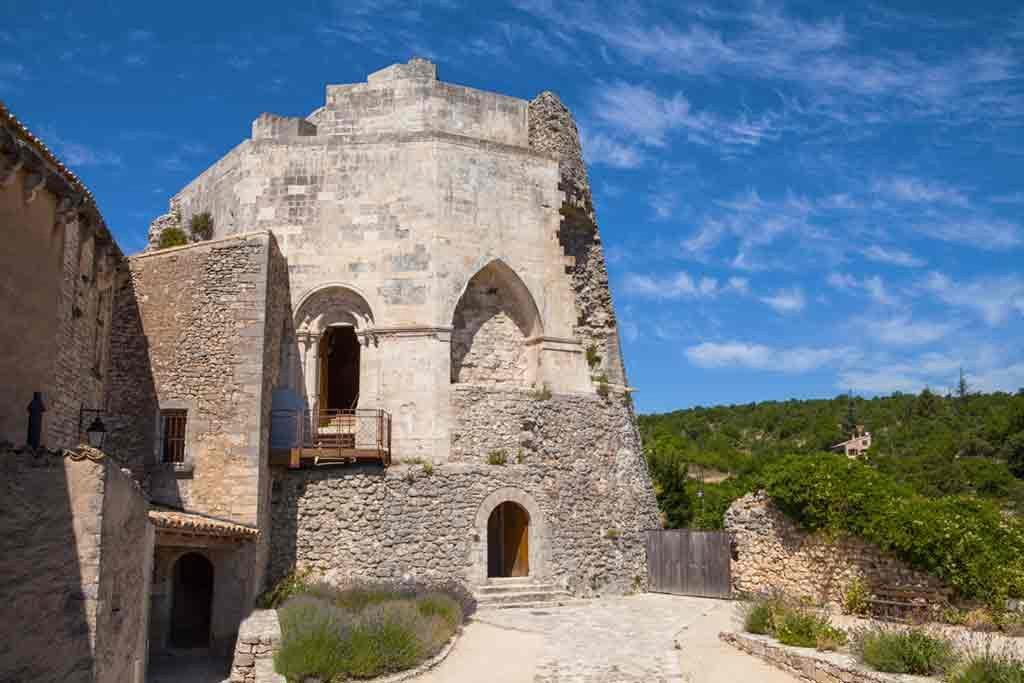
The Castle of Simiane-la-Rotonde is a medieval castle that dominates the surrounding olive groves and lavender fields from its hilltop position. This fortified structure dates back to the 12th century and features a beautiful keep, a Romanesque hall, and many decorative elements. Visitors can enjoy an exhibition on the history of the castle.
Where: Village of Simiane-la-Rotonde
When: 12th-century
Open to visit: Yes, check here for more information.
30. Castle Roquetaillade
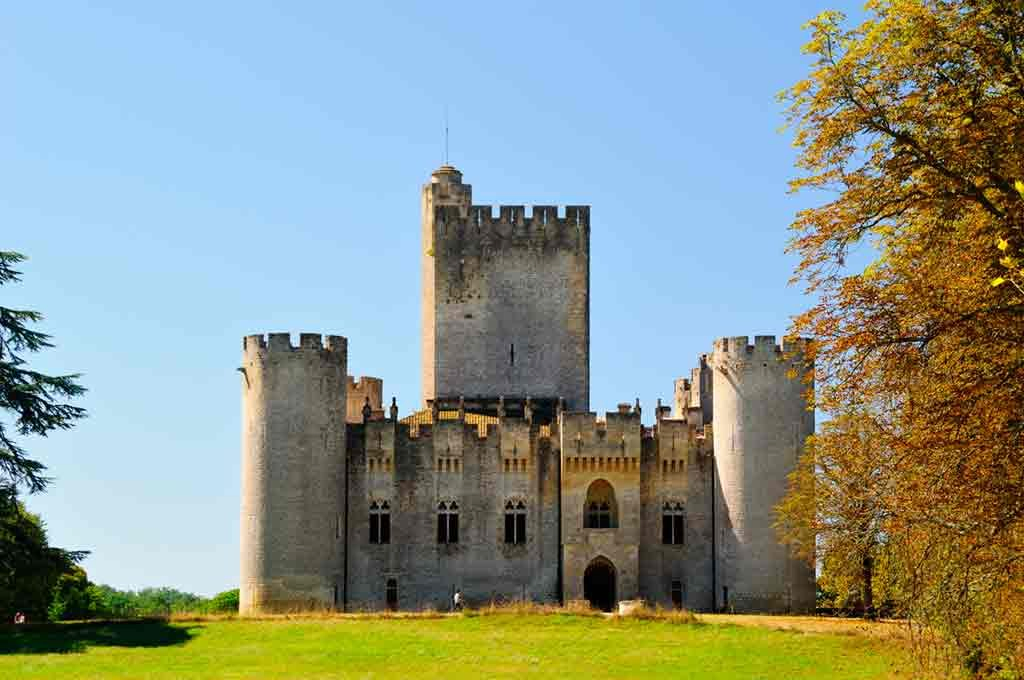
Built in the 14th century, Castle Roquetaillade has been inhabited by the same family for the past seven centuries. With its ramparts, towers, and dungeons from the Middle ages, this historical monument is considered an exquisite example of French medieval architecture.
However, many Renaissance-style elements were added later. The interiors are also uniquely decorated with valuable furniture and artwork. The castle is the private property of the Roquetaillade family.
Where: Mazères, Aquitaine
When: 14th-century
Open to visit: yes, check here for more information.
Visiting the best castles in Southern France is a good way to travel back in time to an era of impressive grandeur. Adding that these monuments are located in scenic locations, surrounded by olive groves, lavender fields, and forests, your visit can only be rewarding.
FAQs about the Best Castles in Southern France
Among the best castles in Southern France are Palais des Papes in Avignon, Château Comtal in Carcassonne, Château de Foix in Foix, Castle of Val in the municipality of Lanobre, and Château de Bonaguil in Saint-Front-Sur-Lémance.
The Palais des Papes in Avignon is the largest castle in South France. The castle was built in the 14th century and is considered one of the most extraordinary residences in the world. The Palais des Papes was the official residence of the pope.
Château Comtal, a UNESCO World Heritage Site in the medieval city of Carcassonne, is the most beautiful medieval château in Southern France.
PIN IT!

